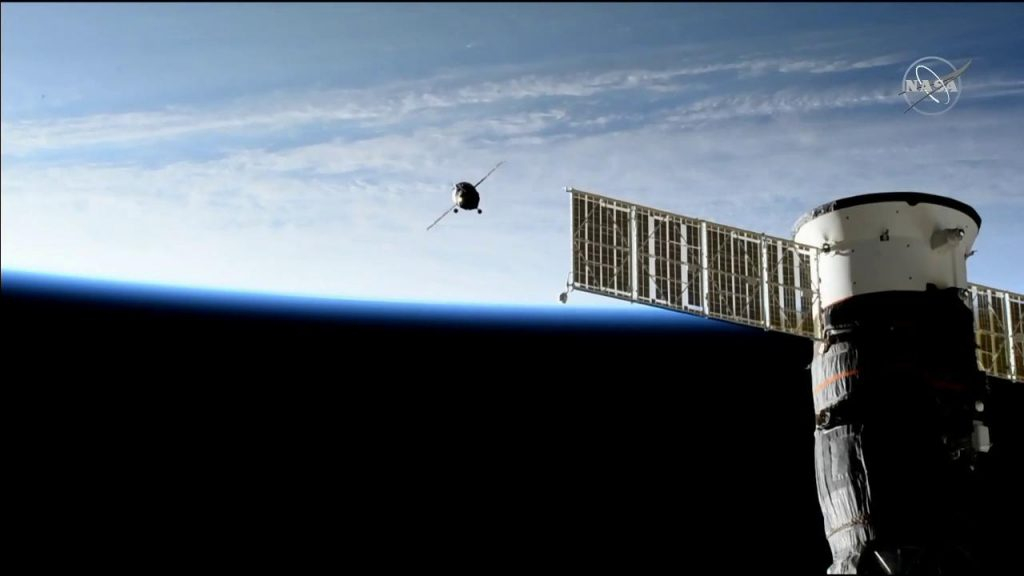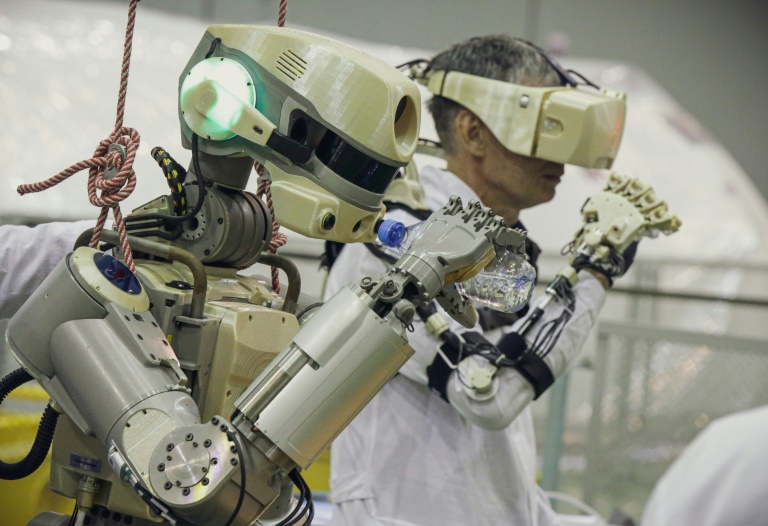

Soyuz MS-14 spacecraft during its approach with Soyuz MS-13 in the foreground. /NASA Photo
An unmanned spacecraft carrying Russia's first humanoid robot to be sent into orbit successfully docked at the International Space Station (ISS) on Tuesday, following a failed attempt over the weekend.
"Contact confirmed, capture confirmed," a commentator on NASA TV said.
The lifesize robot named Fedor – short for Final Experimental Demonstration Object Research – copies human movements, a key skill that allows it to help carry out tasks remotely.
It blasted off on Thursday in a Soyuz MS-14 spacecraft from a Russian spaceport in southern Kazakhstan and is due to stay on the ISS until September 7, learning to assist astronauts in the space station.

The lifesize robot named Fedor copies human movements. /AFP Photo
An aborted docking on Saturday had increased uncertainty over the future of Russia's space program, which has suffered a number of recent setbacks.
NASA said Saturday the craft had been "unable to lock onto its target at the station," and had "backed a safe distance away from the orbital complex while the Russian flight controllers assess the next steps."
Russian flight controllers had told the ISS crew it appeared the problem that prevented automated docking was in the station and not the spacecraft, NASA added.
Soyuz ships are normally manned on such trips, but this time no humans were traveling in order to test a new emergency rescue system.
Fedor is not the first robot to go into space. In 2011, NASA sent up Robonaut 2, a humanoid developed with General Motors that had a similar aim of working in high-risk environments.
It was flown back to the Earth in 2018 after experiencing technical problems.
In 2013, Japan sent up a small robot called Kirobo along with the ISS's first Japanese space commander. Developed with Toyota, it was able to hold conversations – albeit only in Japanese.
The ISS has been orbiting the Earth at about 28,000 kilometers per hour (17,000 miles per hour) since 1998.
Last October, a Soyuz rocket carrying an American and a Russian had to make an emergency landing shortly after lift-off, the first failure in the history of manned Russian flights.

Copyright © 2018 CGTN. Beijing ICP prepared NO.16065310-3
Copyright © 2018 CGTN. Beijing ICP prepared NO.16065310-3